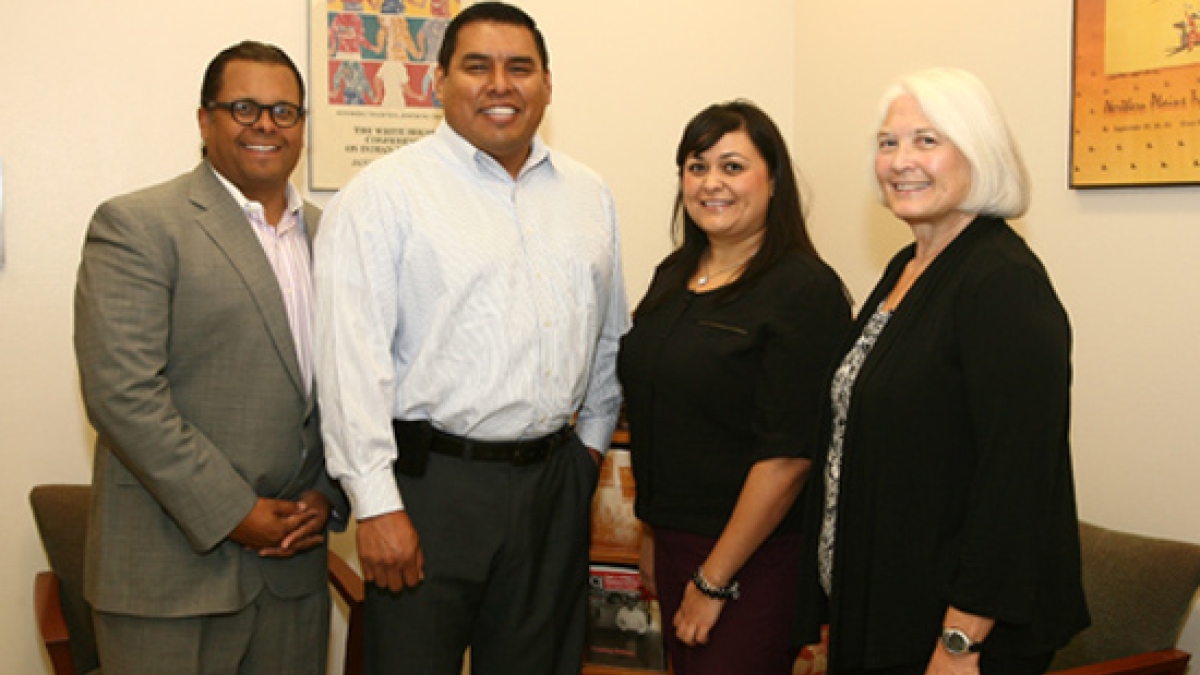ASU, Gila River partner in preparing early childhood educators

ASU’s Center for Indian Education has been awarded a $1.2 million grant for an innovative teacher preparation project that will enroll 16 Native American participants in an ASU bachelor’s degree program offered onsite within the Gila River Indian Community. The four-year project is a joint partnership between ASU and the Gila River Indian Community’s Tribal Education department and funded by the U.S. Department of Education’s Office of Indian Education.
The project “Gila River Early Educators Attaining Teaching Excellence” (GRE²ATE) has been designed to serve American Indian educators already working with children in Head Start and Early Education classrooms on the Gila River Indian Community reservation. Participants will complete this interdisciplinary bachelor’s program while continuing to teach at their schools
The program focuses on early years curriculum planning, child development, family involvement, transitioning children from Head Start and tribal preschools to K-3, and integrating culture and Native language into early childhood classrooms. Also built into the program are features to ensure participant success, including mentoring and test-taking and technology training.
The site-based cohort will graduate with a concentration in early childhood education, leading to Arizona Early Childhood Teacher Certification. A year of induction mentoring will follow, to help graduates initiate an ongoing professional network of support in using culturally relevant and language-rich early education teaching practices.
“The Center for Indian Education believes that partnering with tribal nations like Gila River Indian Community fulfills part of the New American University’s design aspirations to leverage our place, transform society, enable student success, and be socially embedded,” says center co-director Bryan McKinley Jones Brayboy, Borderlands Associate Professor of Indigenous Education and Justice in the School of Social Transformation and principal investigator on the grant. “We are honored to collaborate with the Gila River Community in this important work.”
Mario Molina, Tribal Education director for the Gila River Indian Community, sees the program as a sustainable model for instruction that will build capacity from within the community.
“The GRE²ATE program will provide my community an opportunity to develop our own teaching cadre that will recognize and encompass the essence of the Akimel O’Otham and Pee Posh culture, language and heritage as we teach our young members,” says Molina. “We see this as a positive attribute that will help sustain the community for years and generations to come, and will serve as a model of instruction that we hope will work in concert with the beliefs that we hold dear as an indigenous community.”
A number of teacher preparation degree projects coordinated by ASU’s Center for Indian Education have served well to inform the development of this new program. Deborah Chadwick, project director for GRE2ATE, has successfully overseen a number of them. She also worked as an educator within the Gila River Indian Community for eight years.
About this work, Chadwick says, “Through my years of experience working with the community, I’ve had the opportunity to discuss with colleagues and community members the need for more highly qualified early childhood teachers who are from the community. This is important because it adds to the pool of teachers who know their children, are best likely to understand the community’s educational needs, and are less likely to leave the community. Our program will help add to the pool of highly qualified early childhood teachers without pulling these important educators away from the preschools and children who rely on them. We are hoping to continue this partnership beyond the life of this grant and help the community build teacher capacity.”
“Having someone with Debby’s stature, experience and wisdom leading this program is good for both ASU and GRIC,” agree Molina and Brayboy. “We’re fortunate to have her overseeing this important work.”
The program is accepting applicants now, with courses to begin in spring 2013. Priority in the selection process will be given to current Gila River Head Start and Early Education/Child Care teachers and teacher assistants. Applicants who have earned or are nearing completion of an associate’s degree will receive priority. To learn more about the project, financial support involved, or to begin an application, visit http://center-for-indian-education.asu.edu/gre2ate.
The Center for Indian Education was established at ASU more than 50 years ago. Over the years its mission has been continually revisited and reinterpreted to reflect changing contexts and evolving needs. The center has an abiding commitment to tribal nations of Arizona and to ASU, while expanding its emphasis on world-class research, the preparation of future generations of Indigenous scholars, and involvement with a global community of scholars, policy makers, and practitioners in Indigenous education. The Center is part of ASU’s School of Social Transformation, an academic unit of the College of Liberal Arts and Sciences.
Project contacts:
Deborah.Chadwick@asu.edu, project director
ASU’s Center for Indian Education
480-727-6405
Patricia.Valenzuela@gric.nsn.us, assistant Tribal Education director
Gila River Indian Community, Tribal Education Department
520-562-3662
Media contact: